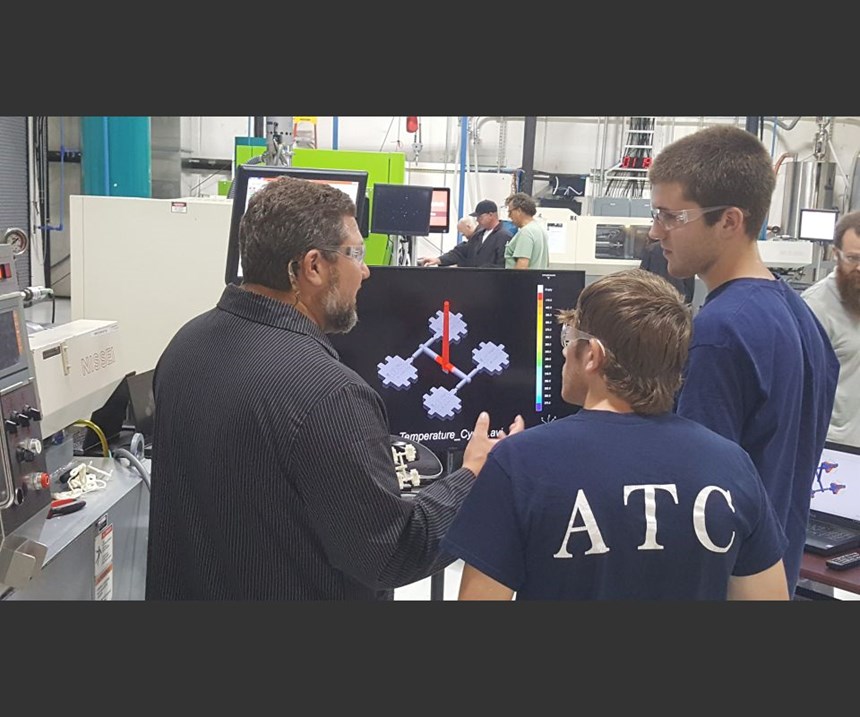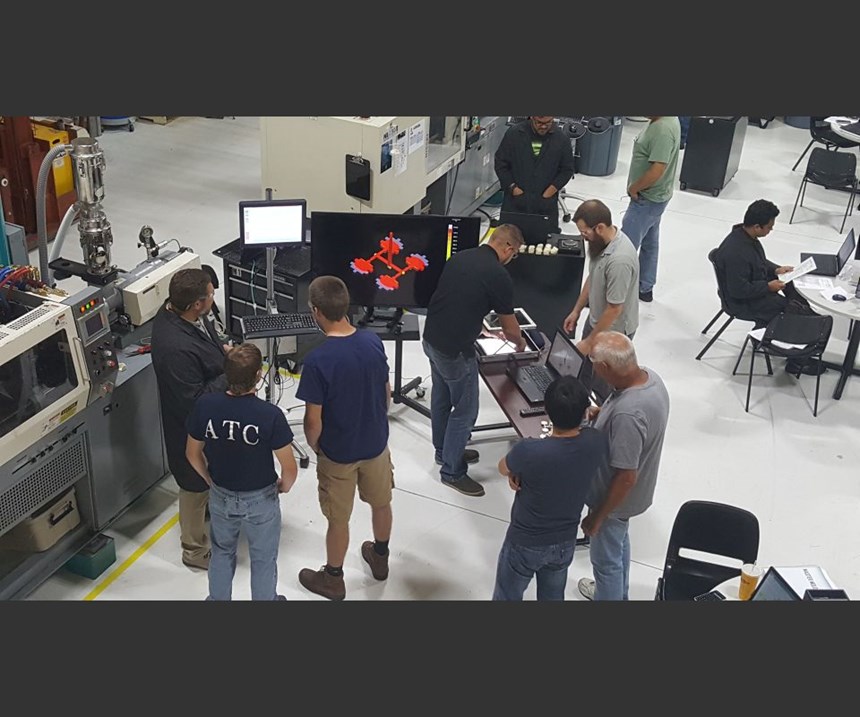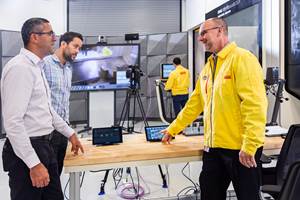Collaboration Key to Completing Puzzle Mold for Training
Collaborative manufacturing is what helped make an apprenticeship training program and a scientific molding training program come together in the form of a puzzle mold on July 21.
Collaborative manufacturing is what helped make an apprenticeship training program and a scientific molding training program come together in the form of a puzzle mold on July 21.
According to Marty Key, RJG Inc. trainer and consultant, it all began at RJG Inc’s Gibsonville, North Carolina, training facility with its TZERO division, which helps clients bridge the gaps between part design, mold design and manufacturing through simulation, education and optimization. The TZERO team opted to have a four-cavity puzzle mold built for use at the RJG training facility. Key says all mold and part design issues were addressed through flow simulation prior to manufacturing the mold, and Progressive Components recently donated of eight rapid tooling inserts. “It was really amazing how it all came together so quickly,” Key says. “Progressive and RJG began reaching out to mold builders to see if they would donate their services to insert sensors and create the cores and cavities for the mold. Mooresville, North Carolina-based Ameritech Die and Mold Inc. volunteered its time and resources to complete the work through their association with the apprentice program Apprenticeship 2000.”
Apprenticeship 2000 is a four-year program that requires rising juniors in high school to complete a registration, open house, orientation and pre-apprentice summer program before being accepted. Once accepted, sponsor companies like Ameritech pay the student to attend classes at a local community college and receive hands-on training at their facilities.
At the end of the program, students receive an Associate’s Degree in Mechatronics Engineering Technology, a Journeyman’s Certificate from the state of North Carolina and a guaranteed employment with a $36,000 annual salary. In addition, the company receives an employee that is not only trained in theory, but in application.
Casey Meyer, a Junior at South Iredell High School and prospective apprentice, and Mike Merzke, apprentice and recent high school graduate, were the students working alongside Ameritech employee mentors in each step of the mold manufacturing process, so they could see it from conception to launch.
“A few years ago, my son Mark initiated a mold design and build project so that students (prospective apprentices) could gain a more complete understanding of what moldmaking is,” says Steve Rotman, Ameritech president. “This gave the students a total feeling of accomplishment, seeing the mold through every step from design to actually molding parts. But because we only had one student last year, Mike Merzke, it was hard to justify building a mold, so we didn’t do it. But when this opportunity was presented by Mark Casey, regional sales manager of Progressive, and because of our existing partnership in mold building with RJG, it made sense to give Mike as well as Casey the opportunity to see the whole process.”
As the mold was sampled that day, Key says the students watched as it produced perfect parts. “The mold trial was flawless. With TZERO’s design, the manufacturing capabilities of Ameritech and the talented students of the Apprenticeship 2000 program, the mold produced quality components from the first cycle.”
So, mission accomplished. Ameritech was able to give two young men a potentially life-changing, career-based experience and RJG’s TZERO division has a new mold to use as a training tool—all due to collaborative manufacturing.
As an aside, Key told me the Apprenticeship 2000 program has dropped the average age of Ameritech’s staff to 35 years of age, which is much younger than the national average. Rotman says it all comes down to a successful training progam. “Ameritech would not be the company we are without Apprenticeship 2000.” Then he added, “We are super happy and confident that Mike Merzke is going to be an Ameritech-ian!”
Related Content
Leading Mold Manufacturers Share Best Practices for Improving Efficiency
Precise Tooling Solutions, X-Cell Tool and Mold, M&M Tool and Mold, Ameritech Die & Mold, and Cavalier Tool & Manufacturing, sit down for a fast-paced Q&A focused on strategies for improving efficiencies across their operations.
Read MorePredictive Manufacturing Moves Mold Builder into Advanced Medical Component Manufacturing
From a hot rod hobby, medical molds and shop performance to technology extremes, key relationships and a growth strategy, it’s obvious details matter at Eden Tool.
Read MoreHands-on Workshop Teaches Mold Maintenance Process
Intensive workshop teaches the process of mold maintenance to help put an end to the firefighting culture of many toolrooms.
Read MoreHow to Use Continuing Education to Remain Competitive in Moldmaking
Continued training helps moldmakers make tooling decisions and properly use the latest cutting tool to efficiently machine high-quality molds.
Read MoreRead Next
Reasons to Use Fiber Lasers for Mold Cleaning
Fiber lasers offer a simplicity, speed, control and portability, minimizing mold cleaning risks.
Read MoreHow to Use Strategic Planning Tools, Data to Manage the Human Side of Business
Q&A with Marion Wells, MMT EAB member and founder of Human Asset Management.
Read MoreHow to Use Continuing Education to Remain Competitive in Moldmaking
Continued training helps moldmakers make tooling decisions and properly use the latest cutting tool to efficiently machine high-quality molds.
Read More
























